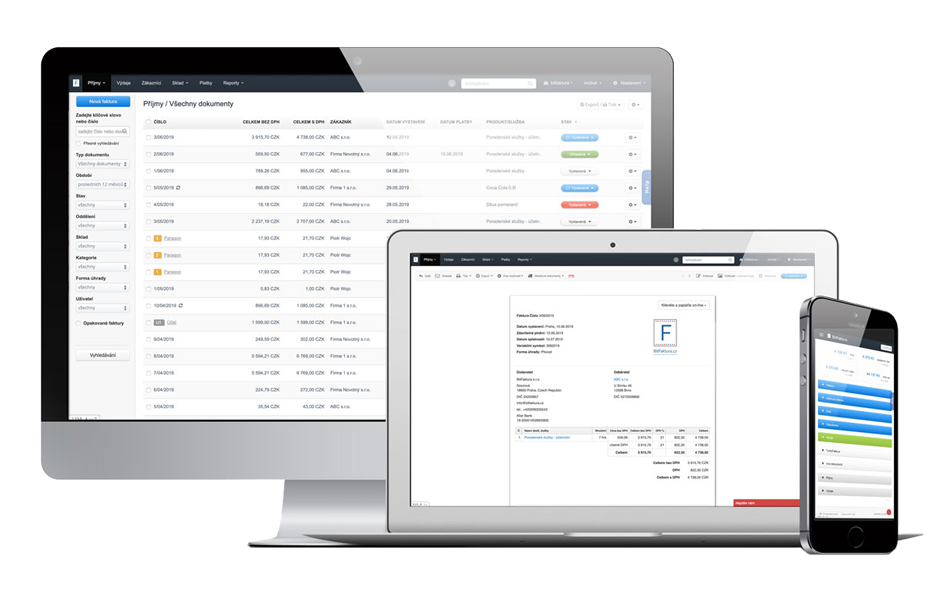When managing your own business, it can feel necessary to collect payment as soon as services are rendered. You may fear late payments that end up increasing your overhead, or worse, receiving no payment at all.
For this reason, using a ‘Due Upon Receipt’ method for invoice payment terms has its advantages and can help you get paid today.
What is a due upon receipt invoice? This type of invoice requires payment upon receipt, or by the next business day at the latest.
While this technique doesn’t require your clients to pay for services upfront, it still effectively communicates your expectation to be paid in a timely manner.
This is an especially beneficial method to use when you have a new or one-time client with whom you do not have an already established relationship.
Of course, like any business decision, there exists pros and cons regarding due upon receipt invoices. Here are some items to consider:
Pros
-
Stronger cash flow. Being paid on time means more capital to work with when necessary.
-
Saved time, and therefore saved money, by eliminating the need to chase down clients for payment.
-
It becomes easier to keep track of due invoices.
-
You will notice a quicker project turnaround.
-
A prompt itemized bill provides clear expectations for the client.
-
Immediate invoices are beneficial for recording services rendered. Coupled with technology that fights fraud, doling out frequent invoices can prevent you or your clients from being scammed.
-
Due upon receipt invoices can be an opportunity to frequently market your company through branding. Using powerful marketing words in your invoice’s language can improve your company’s image.
-
Your business becomes more likely to gain a reputation of professionalism and clarity.
-
Any necessary revisions in order to receive payment can be ironed out sooner.
-
You will receive more frequent feedback on your billing practices.
-
Your clients can plan for payment sooner.
-
If you institute this practice with all your clients, they may feel that they are being treated fairly and equally.
-
These invoices make it more difficult for clients to claim that they didn’t receive proper notice of balance due.
-
Clients will approach you sooner if they need to discuss other payment options.
-
It can become easier to track payments for separate projects under the same client.
-
Similarly, it simplifies the task of receiving payment from multiple clients for the same project.
-
These invoices can centralize your payment methods by immediately requesting all clients to send money online.
-
Distributing invoices every day at the same time can allow you to designate a daily timeframe for addressing clients’ invoicing concerns.
-
Issuing frequent invoices allows your business to examine trends in payment completion.
-
It also allows you to frequently examine trends in market rates that clients are willing to pay.
-
This method of invoicing also allows you to get the most use out of your bookkeeper.
-
Depending on your industry, it may be standard to issue due upon receipt invoices, therefore making your business appear both modern and professional.
While there are many benefits to issuing due upon receipt invoices, you should still consider if it is right for you dependent upon your business practices. Contemplate these possible disadvantages:
Cons
-
Some clients, such as other small businesses, may have a difficult time paying upon receipt.
-
This method may appear demanding and aggressive to some clients. This is why the way you are communicating invoices with clients is important.
-
Some invoices may require revisions and will need to be retracted.
-
If proper attention isn’t paid to language, then invoices that are quickly distributed may be too easily disputed.
-
Some clients may prefer payment plans or being billed on specific dates.
-
It can appear impersonal, especially to loyal clients. Using a tailored business proposal can help your clients to feel heard.
-
It may be more conducive for your business to dedicate a specific time of the month to issuing invoices, rather than spending time on them daily.
-
If your business attracts mostly repeat clients, it could be more work to constantly create invoices rather than doing so sporadically.
-
Similarly, it may signal to your regular clients that you do not trust them to pay in a timely manner.
-
Following up on continual invoices may be time consuming.
-
Large projects can have multiple steps, which would be a hassle to constantly invoice.
-
Clients may want to use individual invoicing methods which cater to their specific needs.
-
It could take time out of each work day to answer clients’ immediate invoicing concerns.
-
While many invoices are useful for keeping detailed records, they could create a lot of material to comb through once tax season arrives.
-
The volume of invoices may also complicate the discussion of billing throughout various levels of your business.
-
Due upon receipt invoices can be difficult to manage if you do not have a dedicated, experienced bookkeeper.
-
Depending on your clientele, your accounting department may have to work with your clients’ accounting departments. Numerous invoices could be difficult to pass through multiple bureaucratic hoops.
-
A constant influx of invoices could cause clients to lose track of payments due, whether they are delivered electronically or physically.
-
This method may require an investment in specific invoicing technology.
-
Countless physical invoices could be viewed as wasteful on your company’s behalf and displease some clients.
-
Overall, it can be more expensive to issue due upon receipt invoices. Costs may manifest through extra employees, technology, or supplies, in addition to other factors. You can implement project management software with invoicing to help organize your invoices.
Final Thoughts
Evidently, a multitude of pros and cons can be considered when deciding if due upon receipt invoices are right for your company’s billing practices.
Fortunately, if you do choose to issue due upon receipt invoices, you can take advantage of invoice generation software.
Software engineers designed these programs with small business’ invoicing needs in mind. They come with a myriad of convenient features, such as automatic invoice generation and payment integration.
Most programs can be purchased using a monthly subscription plan, and many more offer a free trial period for testing if they’re right for you.
You can also couple your invoice generation software with contract templates to catalyze your business needs.
Be sure to reference our list of pros and cons when exploring different invoice generation software. By keeping these factors in mind, you are sure to find a seamless invoicing method for your business.

InvoiceOcean is a simple tool to create invoices as well as manage company income and expenses. Forever free for small business.
Start your free trial
